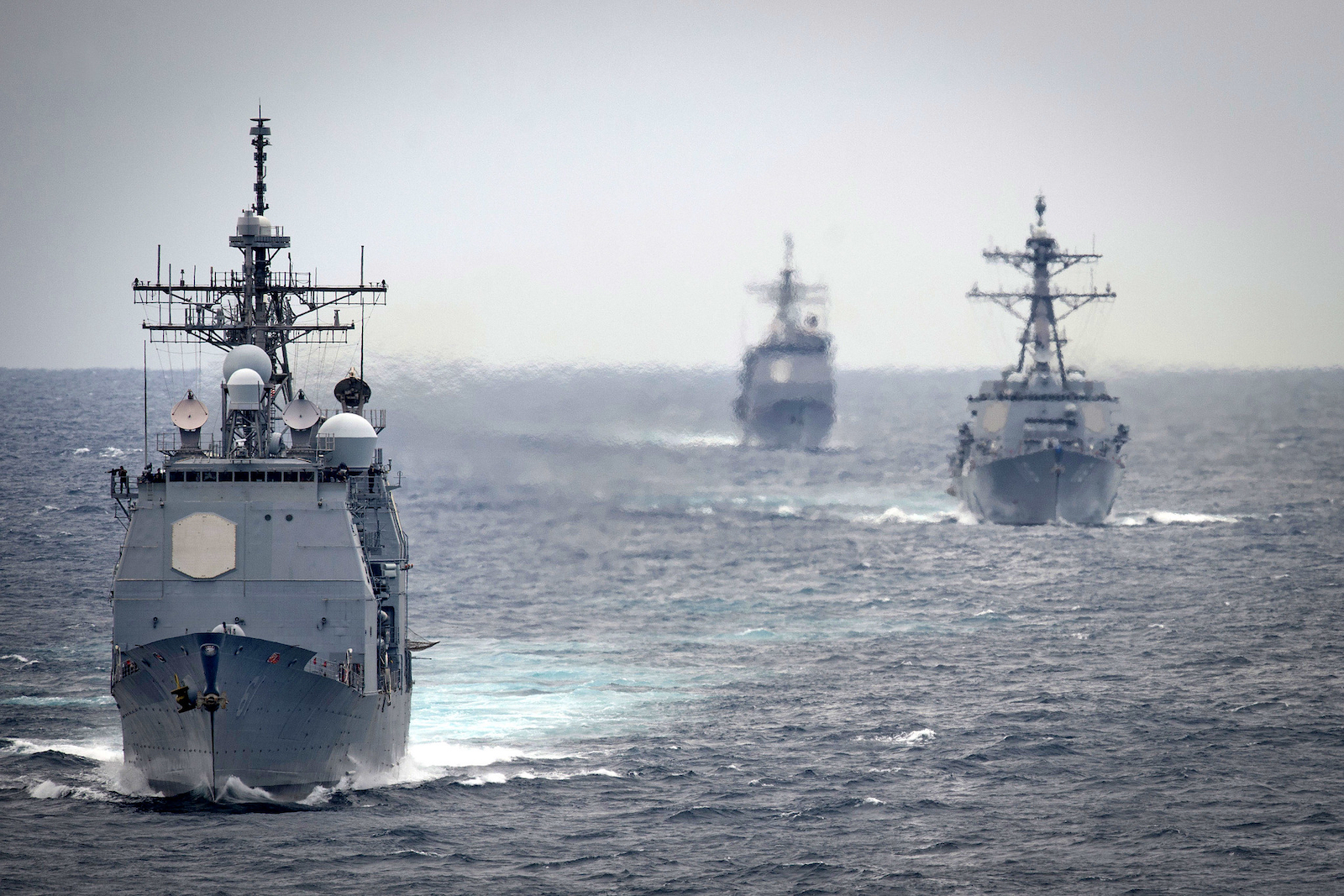
Will the U.S. and Iran Come to Blows in the Persian Gulf?
Pentagon sources have confirmed a significant U.S. military deployment to the Middle East as Iran continues to flex its muscles in the region. According to reports, over 2,000 Marines and a fleet of U.S. Navy vessels are being dispatched to the region, a firm response to Iran’s escalating belligerence.
The deployment includes an Amphibious Ready Group/Marine Expeditionary Unit and a guided missile destroyer. In addition, F-35 and F-16 fighter jets are also being dispatched to the vicinity of Oman, a clear signal of America’s commitment to uphold regional security and stability.
This escalation follows a recent incident in which U.S. naval forces foiled an Iranian operation to seize two commercial tanker ships in the Gulf of Oman and the Strait of Hormuz. Notably, one of the ships endured direct fire during this brazen attempt. This incident is part of a worrying trend, with Iran implicated in numerous acts of aggression against nearly 20 internationally flagged merchant vessels in the region over the past two years.
U.S. Army Gen. Michael Kurilla, commander of CENTCOM, underscored the significance of the additional forces. He stated that the reinforcements’ unique capabilities, in concert with regional partner nations, are essential to safeguarding international commerce and maintaining the rules-based international order. Moreover, he declared this deployment a clear deterrent to Iran’s destabilizing activities in the region.
Further exacerbating the tension is Iran’s recent arrest and detention of another U.S. citizen, marking the fourth such incident. This latest development has made the Biden administration’s bid to broker prisoner exchanges and defuse the situation with Tehran more complex. Semafor reported on the detention, but the identity of the detained American remains undisclosed.
It’s important to note that Iran has previously resorted to hostage-taking as a political tactic. The ongoing detention of three other Americans, including businessmen Siamak Namazi and Emad Shargi, and environmentalist Morad Tahbaz, only adds to the intricate diplomatic challenge at hand.
These developments reveal a volatile and precarious situation, demanding astute diplomacy and judicious military action to uphold peace and stability.
Iran’s Defense Minister, Mohammad-Reza Gharaei Ashtiani, appears to shrug off the recent U.S. military mobilization to the Persian Gulf. He confidently lauded the Islamic Republic’s military capabilities and its readiness to counter any regional threats. Speaking to state media on Wednesday, Ashtiani stated that Washington’s actions are part of their own game, but Iran boasts a level of power and authority that renders it immune to such threats.
In response to the new U.S. deployment, Iran’s Defense Minister, Mohammad-Reza Gharaei Ashtiani, conveyed his nation’s confidence as a regional player with significant naval and ground capabilities. He also lauded Iran’s drone technology, proudly calling Iran a drone superpower. Ashtiani noted that Iranian-made drones have attracted international interest, although he declined to provide further specifics, including the potential use of these drones in confrontations with U.S. forces in the Persian Gulf.
Iran’s drone program is a contentious issue that fuels tension with Washington. Although Tehran denies claims of supplying drones to Russia for use in Ukraine, Western nations remain suspicious. Iranian state media seems to revel in these concerns, viewing them as a testament to Tehran’s influence and often showcasing videos of their drones’ precision strikes, like the Shahed 136, on Ukrainian targets.
The situation in the Persian Gulf remains taut, as both the U.S. and Iran continue to project their military prowess and sway in the region. With global eyes trained on the area, the unfolding geopolitical drama could have significant repercussions for regional stability and the world’s oil supply.

